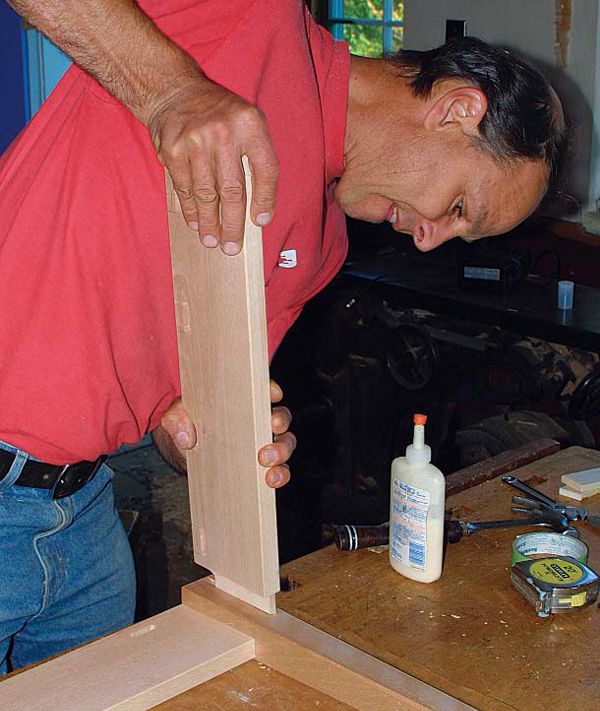Joining Legs to Aprons
The size and location of mortise-and-tenon joints affect their strength
Synopsis: The life of a table is not easy. All the stress concentrates on the leg-to-apron joint, which holds a table together. Here, Garrett Hack offers step-by-step directions on how to make a well-designed, tight-fitting mortise-and-tenon joint that locks the apron to the leg for a long-lasting, stable piece. His techniques employ a mix of hand and power tools.
The life of a table is often not easy. Legs get kicked; the table gets pushed and pulled across uneven floors, leaned against and sometimes even sat upon. To make matters worse, the very nature of wood adds to the stress. As the tabletop shrinks and swells with seasonal changes, the movement works against the integrity of the table’s structure. Where is all this stress felt? It’s the leg-to-apron joint that holds a table together and gives it rigidity. When that joint fails, the table falls apart.
Leg-to-apron joints must withstand three different kinds of stress. One is shear—a vertical load directly above a joint, such as when someone sits on the corner of a table. Leaning heavily on the top of a table midpoint above the apron causes the joints to undergo a bending stress trying to lever them apart. Shoving the table sideways or bumping against a leg gives the joints a mixture of twisting forces. Also, as a tabletop that is fastened too tightly to the apron expands or shrinks, it can try to twist the joints. The best defense against these stresses is a welldesigned, tight-fitting mortise-and-tenon joint that locks apron to leg. The mortise and tenon is not only a good joint for tables, but the same principles also apply to designing joints for cabinet doors and chairs.
Size the tenon
When deciding on the sizes of joinery components, the key is to attain a workable balance. Too large a mortise, and you risk weakening the leg; too skimpy a tenon, and you lose glue and mechanical strength. The ideal joint would have a large tenon with lots of glue surface, it would be the full height of the apron to best resist twisting, and the mortise would be cut from the center of the width of the leg for maximum strength. But it’s not just the sizes of the mortise and tenon that you have to balance: The shoulders on both sides of the tenon must be substantial enough to do their work. They butt against the leg and resist bending and twisting forces trying to lever apart the joint. A good rule of thumb is to size the tenon thickness a little more than one-third the thickness of the apron.
While the one-third rule is a good general guide to follow, sometimes it’s better to make exceptions. If I’m building a table out of butternut or a similar softwood, with aprons only 3 ⁄4 in. thick, I make the tenons at least 5 ⁄16 in., maybe even 3 ⁄8 in. thick. Any smaller and a sharp bump to the leg might snap the tenon right off. Because you rarely see the thickness of an apron, one good design strategy is to make it thicker—7 ⁄8 in. or 1 in. will provide larger, stronger shoulders.
From Fine Woodworking #161
For the full article, download the PDF below:
Fine Woodworking Recommended Products

Bessey EKH Trigger Clamps

Suizan Japanese Pull Saw

Festool DF 500 Q-Set Domino Joiner























Log in or create an account to post a comment.
Sign up Log in